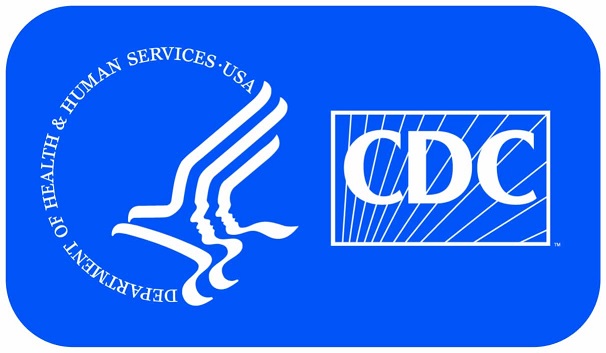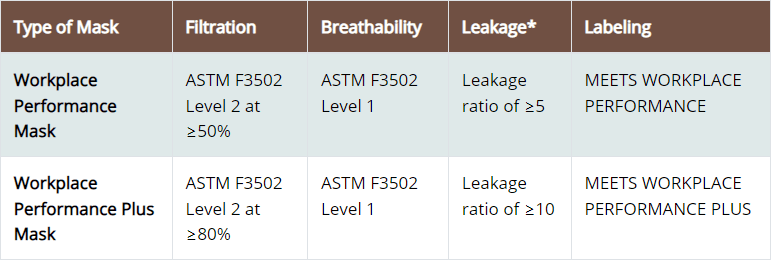 In response to the discovery and subsequent rapid spread of the COVID 19 Omicron variant, the Centers for Disease Control and Prevention (CDC) has issued updated guidance regarding selection of face coverings, which places renewed emphasis on the importance of effective source control. The highly transmissible Omicron variant has become the most dominant form of the coronavirus in the United States and the CDC continues to recommend wearing a mask in public indoor settings in areas of substantial or high community transmission (regardless of vaccination status). In the updated guidance the CDC suggests use of filtering facepiece respirators (N95, N99, N100, P95, P99, P100, R95, R99, and R100) or barrier face coverings (cloth masks) that meet the criteria laid out by NIOSH and by ASTM in the new voluntary standard ASTM F3502-21.
In response to the discovery and subsequent rapid spread of the COVID 19 Omicron variant, the Centers for Disease Control and Prevention (CDC) has issued updated guidance regarding selection of face coverings, which places renewed emphasis on the importance of effective source control. The highly transmissible Omicron variant has become the most dominant form of the coronavirus in the United States and the CDC continues to recommend wearing a mask in public indoor settings in areas of substantial or high community transmission (regardless of vaccination status). In the updated guidance the CDC suggests use of filtering facepiece respirators (N95, N99, N100, P95, P99, P100, R95, R99, and R100) or barrier face coverings (cloth masks) that meet the criteria laid out by NIOSH and by ASTM in the new voluntary standard ASTM F3502-21.
What is ASTM F3502-21?
ASTM F3502-21 is the first ASTM standard to address barrier face coverings and it was developed in response to the COVID 19 pandemic. It is a voluntary standard for mask manufacturers that applies to barrier face coverings (“COVID masks”) to verify the efficacy of their masks under a uniform testing approach. The standard compares product performance on 4 parameters to assist in making informed purchase decisions: filtration efficiency, air flow resistance, re-use potential, and leakage. Manufacturer performance claims abound on product packaging, often referring to the purported filtration efficiency of the material that the mask is constructed with, yet they are generally silent as to the overall level of protection likely afforded. The ASTM F3502-21 standard provides minimum requirements for design, performance, testing, conformity, and labeling of barrier face coverings. The conformity requirements in the specification were established to provide confidence that products labeled as “compliant” meet all of the criteria laid out in the specification. To meet the design requirements laid out in the standard, barrier face coverings must:
- Cover at least the wearer’s nose and mouth and fit snug where the mask contacts the face to prevent gapping. (Face coverings that come in multiple sizes and single-size are permitted. Single size models will exclude small children from the end user population)
- Have a means for keeping the covering over the wearer’s nose and mouth (ties, ear loops, harnesses, etc)
- Be designed for single use or re-use
- Be constructed of non-irritating, non-toxic material that does not pose a flammability hazard and can withstand ordinary handling and use (and in the case of reusable masks, laundering).
- Be free of sharp edges or points
- Barrier face coverings must not have vents or valves as part of their design
ASTM F3502-21 Standard for Barrier Face Coverings
To meet the performance requirements of the standard, barrier face coverings must meet/exceed minimum sub-micron particulate filtration efficiency and air flow resistance requirements. To determine whether a barrier face covering meets the ASTM F3501-21 performance criteria, mask manufacturers and designers can opt to conduct quantitative leakage assessment testing on a group of 25 volunteers with a range of face shapes and sizes that represent 98% of the adult population, also known as the NIOSH bivariate panel. A mask that meets the ASTM F3502-21 standard is able to be used as a “means of source control for individual wearers by reducing the number of expelled droplets and aerosols from the wearer’s nose and mouth into the air”.
Meet NIOSH Standards With ASTM F3502-21
NIOSH recommends a new standard in masks, called Workplace Performance and Workplace Performance Plus masks, for workplaces. To fully meet the new NIOSH criteria, masks must conform to all criteria in ASTM F3502-21 as well as meet additional quantitative leakage and testing criteria.
Masks meeting the ASTM design and performance criteria and NIOSH leakage and labeling requirements are labeled to indicate what standard they meet:

A list of masks that meet these standards and more information on their availability can be found on the NIOSH Personal Protective Equipment Info (PPE-INFO) webpage.
ASTM Standard F3407-20: Filtering Facepiece Respirators (N95)
In addition to standard F3502-21, ASTM also developed a voluntary standard to validate the design and performance of filtering facepiece respirators (FFRs) such as N95 respirators under ASTM Standard F3407-20, Respirator Fit Capability for Negative-Pressure Half-Facepiece Particulate Respirators (RFC Standard). This standard provides detailed instructions for performing a respirator fit capability test to determine the fit of air-purifying, half-facepiece respirators, which will include both filtering facepiece respirators and elastomeric respirators equipped with any type of particulate filter. Conformity assessment program scheme owners, such as NIOSH, may be able to adopt and use the RFC standard.
Responsive to the newly presented challenges of the COVID-19 pandemic and release of ASTM F3502-21 Standard, RHP Risk Management has constructed an isolation chamber (test booth) for testing the performance of barrier face coverings (masks) and filtering facepiece respirators (N95) in accordance with both the ASTM F3407-20 and ASTM F3502-21 standards. RHP’s testing measures the performance of masks and respirators on a group of 25 users following the NIOSH bivariate panel approach when wearing the mask according to manufacturer instructions. For more information on RHP’s services, contact us or visit rhprisk.com/astm-mask-testing.
